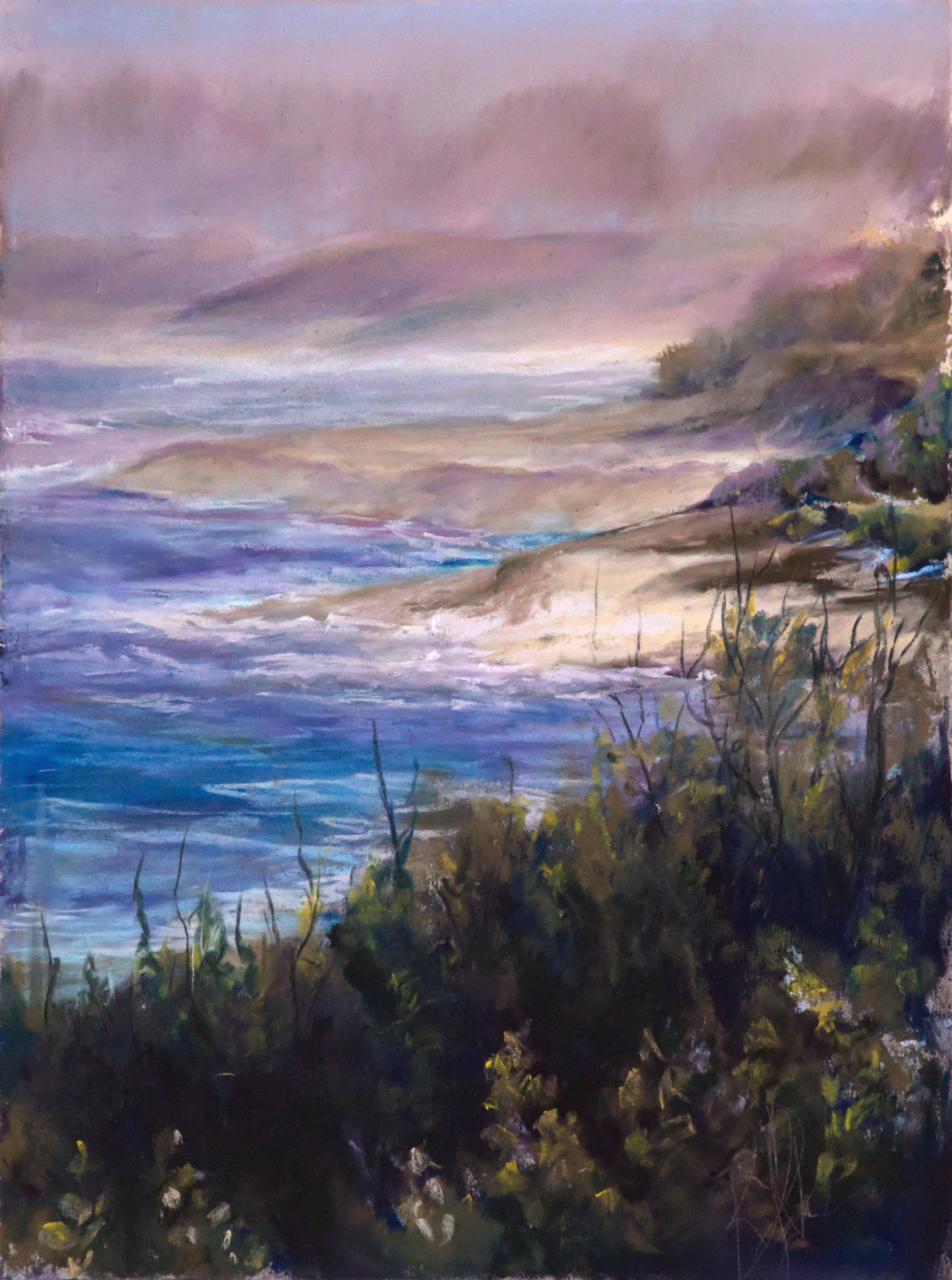Oahu North Shore
Oahu North Shore is an original 8.5 X 11 pastel on paper painting by Kristin Lester.
Care Instructions for Your Pastel Painting
Your new pastel painting is a hand-painted work of fine art. I use the best archival materials for its creation. If properly taken care of, your painting will last for many lifetimes. Pastel is one of the most permanent art mediums in existence. Many pastels painted over 200 years ago are still as bright and fresh as the day they were created.
The artist’s pigments in my pastels are the same as those used in fine oil paints. The only difference is that with pastel the pigments are not mixed with a liquid binder which may degrade over time. The pure, bright hues will not change or yellow.
The sanded paper support for my pastel paintings is made of the same natural fibers as an artist’s canvas and will last as long or longer. I also use other museum-grade pastel papers in the creation of my art.
Your pastel painting may shed a few particles of pigment when new. This is normal and will not damage the image. The surface will become more solid with time and shedding will stop. Please do not attempt to rub or brush away fallen particles, as you may mar the surface of your painting. Lightly shake them off and store your unframed painting flat in its case until you take it to your framer.
Framing: You will receive your painting in a protective case. This case is fine for short-term storage, but to protect and preserve your painting while it is on display, you should have it professionally framed behind UV glass. Please choose your framer carefully. Discount framers may charge less, but they often save money and cut corners by using non-archival, non-acid-free framing materials. These materials may harm your painting. It’s worth choosing the best quality framing materials so that your family can enjoy your painting for many years to come.
What to tell your framer: You want acid-free, archival framing materials. The backing board and mats, if any, should be museum quality. 100% rag board and acid-free foam core are the best options. Cheap matboard or brown cardboard backings will stain and yellow your painting within a few years.
Do not spray any sort of fixative or coating on your painting in the framing process or allow your framer to do so. Coating or fixing your painting WILL change the colors in your painting, damage the paper or dislodge the pastel particles from the surface. Careful handling is a must. Do not touch the painted surface. Putting fingers or other items on top of the painting or allowing it to be rubbed or flexed will damage the surface. Keep it flat, supported from underneath, and facing upwards to protect the pastel surface.
Choose a framer who is experienced in working with fine art pastels. A framer who works mostly with posters and printed reproductions or oil paintings may not realize that pastels take special handling. Do not risk the welfare of your painting in the hands of an inexperienced framer.
Do not use Plexiglas™ or non-glare glass to frame your painting. Plexiglas™ holds a static charge that may pull pastel particles from the paper and in time create a “ghost” image on the underside of the glass. This will probably not seriously harm your painting, but it will obscure your view of it! Non-glare glass makes your painting appear blurry and dull in color, and it is best avoided.
One good approach for framing your pastel is to use a reversed double mat, with the larger window underneath. This creates a gap behind the mat where any fallen particles will be invisible. Another is to use a spacer strip between the glass and the painting so that no mat is necessary.
Hanging your pastel: Choose a dry place indoors out of direct sunlight. Sunlight, even filtered through a window, is the enemy of all fine artwork. It degrades paper and canvas and may fade pigments. Dampness may damage paper and even allow mold to grow on paintings. Outside walls, basement walls, and stone or concrete walls may transmit dampness, so avoid hanging art on them. An interior wall without nearby windows is ideal. Bedrooms, sitting rooms, and hallways are often the best places for fine artworks. Bathrooms and kitchens may have very damp air, so please avoid hanging your fine artworks near showers, tubs, and stoves.
Thank you for your purchase and I hope that you enjoy your painting for many lifetimes. If you have any questions, please contact me at Kristin@KristinLesterFineArt.com or send me a message on my website WWW.KristinLesterFineArt.com.



